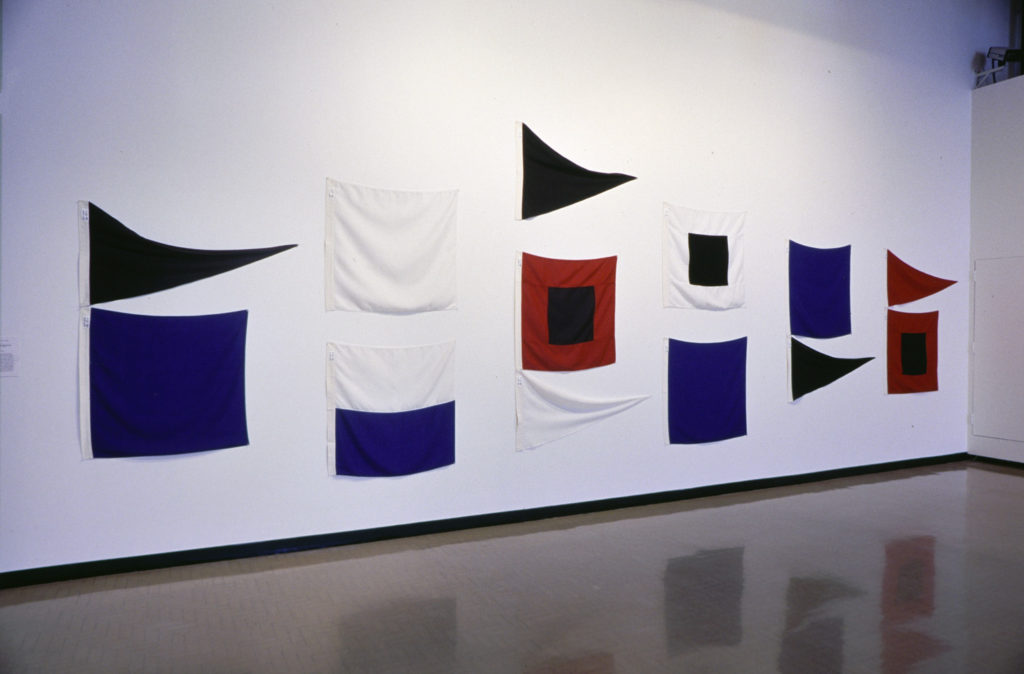ARTISTS Billy Apple, Hany Armanious, Stephen Bambury, Gordon Bennett, L. Budd et al., Eugene Carchesio, Shane Cotton, Bill Culbert, Julian Dashper, Don Driver, Mikala Dwyer, Joe Felber, Luise Fong, Dale Frank, Jacqueline Fraser, Rosalie Gascoigne, Max Gimblett, W.D. Hammond, Jeffrey Harris, Chris Heaphy, Bill Henson, Ralph Hotere, Robert Hunter, Giovanni Intra, Tim Johnson, Richard Killeen, Emily Kame Kngwarreye, Janet Laurence, Colin McCahon, Robert MacPherson, Hilarie Mais, Milan Mrkusich, John Nixon, Michael Parekōwhai, Mike Parr, Seraphine Pick, Patrick Pound, John Reynolds, Peter Robinson, Kathy Temin, Geoff Thornley, Imants Tillers, Billy Stockman Tjapaltjarri, Tony Tuckson, Peter Tyndall, Gordon Walters, Jenny Watson, Judy Watson CURATOR William McAloon ORGANISER Auckland Art Gallery OTHER VENUES Auckland Art Gallery, 5 June–22 August 1999; Manawatu Art Gallery, Palmerston North, 18 November 2000, [date ?]; Dunedin Public Art Gallery, 15 April 2001 [date ?] PUBLICATION Publisher Auckland Art Gallery and David Bateman, Essays [?]
Home and Away includes works by forty-eight leading Australian and New Zealand artists selected from the Chartwell collection.
Started in 1974 by Hamilton businessman Rob Gardiner, the Collection now encompasses more than 600 works of Australasian art. It begins as a way of bringing contemporary art to Hamilton. The collection is on long-term loan to Hamilton’s Waikato Museum of Art and History. However, in 1996, when Hamilton City Council merges the library and museum, replacing the directors with one manager, Gardiner considers the city and museum's credibility damaged. In 1997, he relocates the collection to the Auckland Art Gallery, where it remains on permanent loan.
Home and Away explores the similarities and dialogue between New Zealand and Australian artists. Curator William McAloon divides the show into three parts. ‘Signs/Place/Indigeneity' deals with notions of place and indigeneity and includes Colin McCahon, Tony Tuckson, Gordon Walters, Emily Kame Kngwarreye, Shane Cotton, and Jacqueline Fraser.
‘Abstraction/Expression/Transcendence’ deals with expressionist and spiritual concerns, with works by Stephen Bambury, Max Gimblett, Jeffrey Harris, Bill Henson, and Luise Fong.
‘Abstraction/Material/Signs’ is about responses to abstraction, from Milan Mrkusich to Dale Frank, Julian Dashper to Kathy Temin.
McAloon says, ‘It was clear to me from the beginning that McCahon’s Are There Not Twelve Hours of Daylight and Tuckson's Black, White, Grey (both 1970) would be pivotal for the show. Ideas began to emerge out of those two very different paintings that seemed to resonate throughout the rest of the collection—Tuckson’s interest in Aboriginal art, McCahon's use of language, the belief both held in the transformational power of art.’
McAloon is interested in the similarities and dialogue between the two countries' artists. He says, 'It is more a series of touchstones, points of reference, cross reference, correspondence and exchange. I think the question of influence is a complex and meaningless game to play. Influences are constantly being reshaped and they are all around us … the exhibition hasn't been conceived to set up some kind of trans-Tasman rivalry.’
Sue Gardiner says, ‘Increasingly Australian and New Zealand artists are both at home and away in their own countries. New Zealand born artists Patrick Pound and Rosalie Gascoigne now belong to two communities—Australia and New Zealand. Our artists go away from home and come back, and sometimes home becomes no one place.’
A sidebar show features recent Chartwell acquisitions.

































































